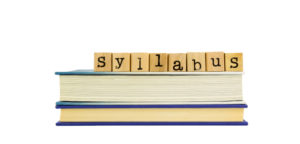
Syllabi: Leveling the Playing Field
I’m a big fan of syllabi used well. On the crassest level—and it’s important—syllabi are contracts between faculty and students, contracts that administration holds us to. When a student makes a complaint, administrators want to be able to pull out the course syllabus and use









